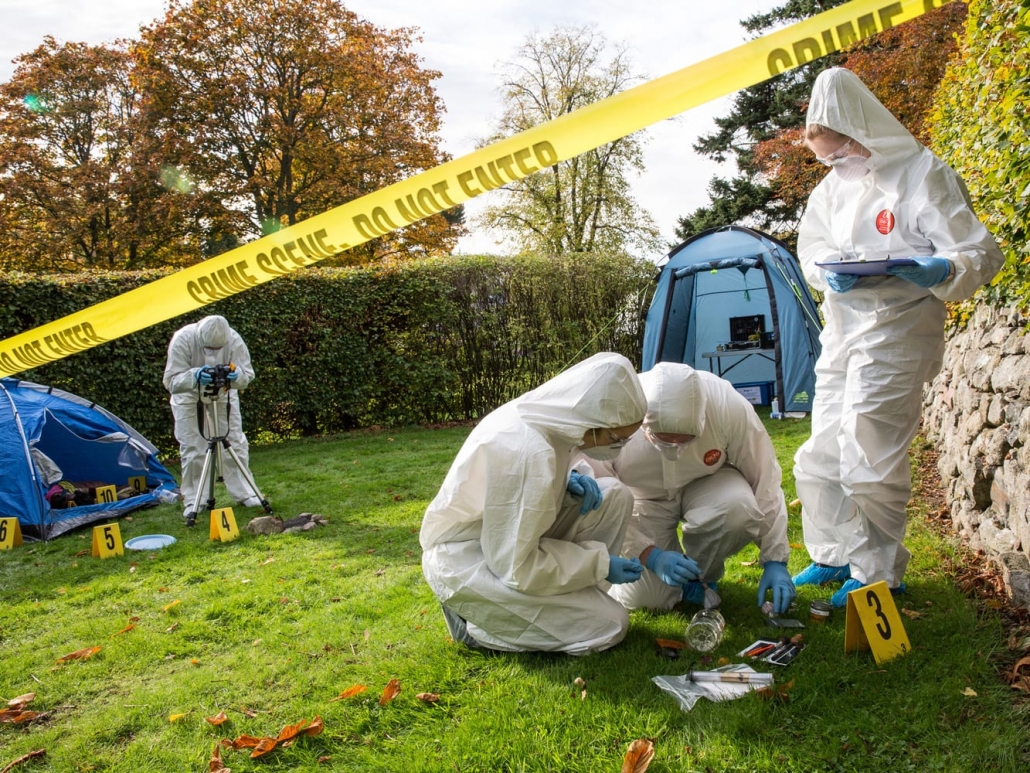How To Disinfect Crime Scenes
Disinfecting crime scenes is a very important job. It needs to be done carefully to keep everyone safe and healthy. This guide will show you step-by-step how to do it right. We’ll go over everything you need to know to make sure the area is clean and safe for everyone.
Why Disinfect Crime Scenes?
Serious events at a crime scene can leave dangerous germs. They may come from blood, bodily fluids, and other harmful materials. Disinfecting these areas is crucial for several reasons:
- Ensure Safety: The first and most important reason is to prevent the spread of harmful germs and bacteria. These can cause infections or diseases if not cleaned properly.
- Support Investigation: By cleaning the scene carefully, you help make sure that any evidence found is not ruined. This helps the police or investigators get the right information.
- Protect Health: A clean area protects the health of all who might contact it, including first responders and investigators.
What Do You Need?
Before you start cleaning, it’s important to gather all the supplies you will need. Here’s a list of what to collect:
- Personal Protective Equipment (PPE): This includes gloves, masks, goggles, and gowns. These items protect you from touching or breathing in harmful substances.
- Disinfectants: You need strong, hospital-grade or EPA-approved disinfectants. These are special cleaners that kill many types of germs and bacteria.
- Cleaning Tools: Have mops, brushes, and cloths ready. These tools help you clean all types of surfaces effectively.
Step 1: Wear Your Personal Protective Equipment (Ppe)
Your safety is very important when cleaning a crime scene. Make sure you wear the right PPE to protect yourself:
- Gloves: Use disposable gloves to avoid touching any dangerous substances directly. Change them often if they get dirty.
- Masks: Wear masks to avoid inhaling any germs or chemicals. This keeps your lungs safe from harmful particles in the air.
- Goggles: Protect your eyes from splashes or any tiny particles that could harm them. This is especially important when using strong cleaners.
- Gowns: Put on gowns to keep your clothes and skin clean. This helps you avoid getting contaminated materials on yourself.
Step 2: Remove And Dispose Of Contaminated Materials
Handling contaminated materials carefully is very important to keep everyone safe. Here’s how to do it right:
Bodily Fluids:
If you see any bodily fluids, like blood or vomit, you need to clean them up carefully. Use absorbent materials such as paper towels or cloths to soak up the fluids. Be sure to follow safety rules, like wearing gloves and masks, to protect yourself from germs. Make sure to clean the area thoroughly to get rid of any remaining germs.
Waste Disposal:
After cleaning up, put everything that touched the contaminated fluids into biohazard bags. These bags are made to keep harmful materials contained and prevent them from spreading germs. Seal the bags tightly to make sure nothing can escape. This is crucial for proper biohazard waste disposal.
Handle Waste Carefully:
When moving or disposing of the biohazard bags, handle them carefully to avoid any leaks or spills. Do not overfill the bags, as this can cause them to break. Always follow local hazardous waste disposal regulations. They ensure correct disposal of the materials.
Disinfect the Area:
After removing the contaminated materials, clean and disinfect the area where the fluids were. Use a strong disinfectant that is approved for killing germs. This step is important to make sure that no germs are left behind, and it helps keep the area safe for others.
Step 3: Clean And Disinfect All Surfaces
Now it’s time to clean and disinfect the area thoroughly. Here’s how to do it:
- Hard Surfaces: Use a disinfectant cleaner on floors, walls, and countertops. Apply the cleaner and let it sit for the amount of time listed on the label. This helps kill germs effectively before you wipe it off.
- Soft Surfaces: For items like carpets and furniture, use a cleaner that is safe for these materials. Enzyme-based cleaners work well to break down organic matter like blood and other bodily fluids.
Related: What Is The Process Of Crime Scene Cleaning?

Step 4: Handle Biohazard Cleaning Properly
Dealing with biohazard cleaning requires careful handling. Cleaning up biohazards means dealing with things that can spread germs or be harmful. Here’s how to do it safely:
Use Biohazard Bags:
When you find items that have germs on them, like blood-soaked cloths or other dirty materials, put them into special biohazard bags. These bags are made to keep dangerous stuff from leaking out and spreading germs. Seal the bags tightly so nothing can get out. Make sure to use these bags for anything that’s been in contact with biohazards.
Follow Regulations:
It’s very important to follow the rules about how to handle and dispose of biohazard waste. Different places have different laws, so check what the rules are in your area. This will make sure you’re doing everything correctly and legally. Not following these rules can lead to problems and might put people at risk.
Label The Bags Clearly:
Write “biohazard” on the bags. This helps everyone know that the bags contain dangerous materials. It’s important for safety and helps make sure the waste is handled correctly.
Store the Bags Safely:
While waiting for the waste to be picked up or taken to a disposal facility, keep the bags in a safe place. This means putting them in a secure area where they won’t be accidentally opened or torn.
Use Proper Disposal Services:
When it’s time to get rid of the biohazard waste, make sure to use a professional service that handles biohazard materials. They have the training and equipment to deal with these materials safely and make sure they are disposed of correctly.
Step 5: Ventilate The Area
Ventilating the area is important to clear out any remaining odors or contaminants:
- Air Out the Space: Open windows and use fans to help the area air out. This helps remove any lingering smells or airborne particles.
- Check Air Quality: Before anyone re-enters the area, make sure the air is clean and safe to breathe. This is crucial for everyone’s health.
Step 6: Document The Cleaning Process
Keeping detailed records is important for safety and legal reasons:
- Cleaning Logs: Write down everything you did, including the cleaning products used and which areas were cleaned. This helps keep track of what has been done.
- Incident Reports: Note any problems or unusual findings during the cleaning process. This information can be important for future reference or investigations.
Step 7: Get Professional Help If Needed
Sometimes, it’s best to call in the experts:
- Specialized Services: If the crime scene is large or hard to clean, contact biohazard cleaning experts. They have the training and tools needed for tough jobs.
Step 8: Review And Follow Safety Protocols
Always follow safety rules to keep yourself and others safe:
Stay Informed:
Keep up with the latest guidelines and safety rules for handling crime scenes and hazardous waste disposal.
Training:
Make sure everyone involved in the cleaning is trained in biohazard waste disposal and knows how to handle biohazards safely.
Related: 10 Must-Have Supplies For Crime Scene Cleaning
Properly Disinfect Crime Scenes
Disinfecting crime scenes is a serious task that needs to be done carefully. By following these steps and using the right equipment, you can ensure the area is safe and clean. This protects health, supports the investigation, and ensures proper handling. Remember to follow safety rules and seek professional help if needed. Cleaning a crime scene properly is a big responsibility, but with the right approach, you can do it safely and effectively.
